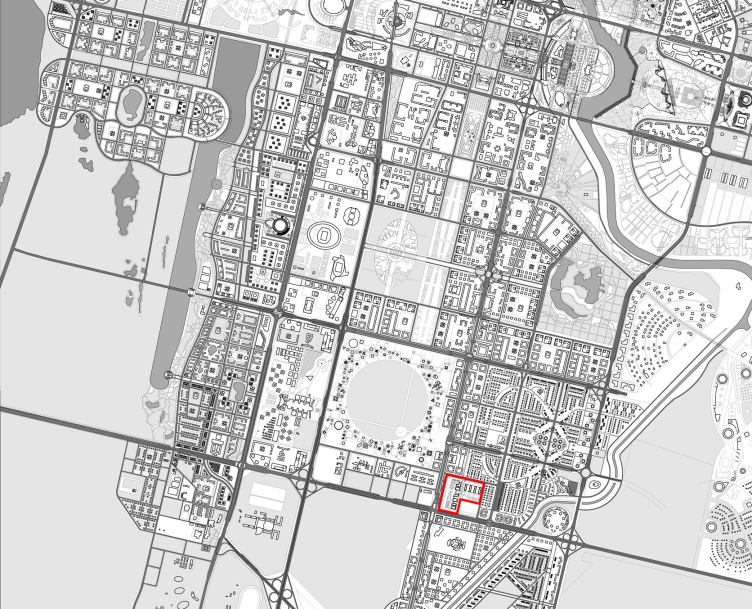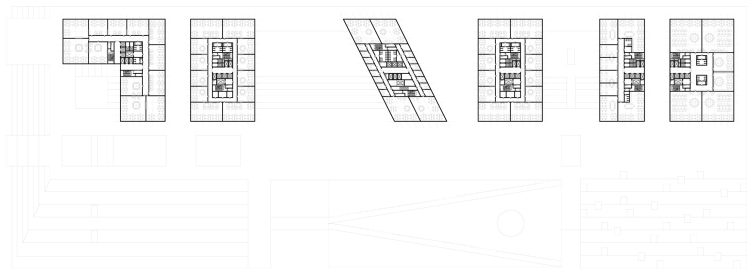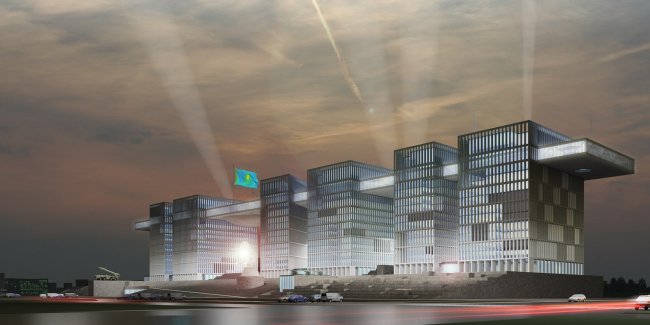
Multifunctional complex of the Defense Ministry of Kazakhstan Republic © “Studio 44”
The new building of the ministry of defense will be built in the southern part of Astana at the intersection of the Orynbor and Tutar Ryskulov streets, across from the still-designed town of "EXPO-2017". Designing such a high-profile project, the architects were to handle not only the compositional and planning tasks. First of all, they were to find a compromise between the certain "closed" nature of such an institution (no matter how you look at it, there is nothing funny about national security) - and the fact that such inaccessibility still stands guard for the interests of state and society. The first thing that "Studio 44" did was divide the conditional parallelepiped of the future ministry into several independent volumes. And then it was the "military carriage" that came to the architects' rescue: while the buildings were not to look as like as two peas, they still had to sport one single rhythm and style, lining up into a solemn rank that would eloquently testify to the force and the power of the defense ministry.
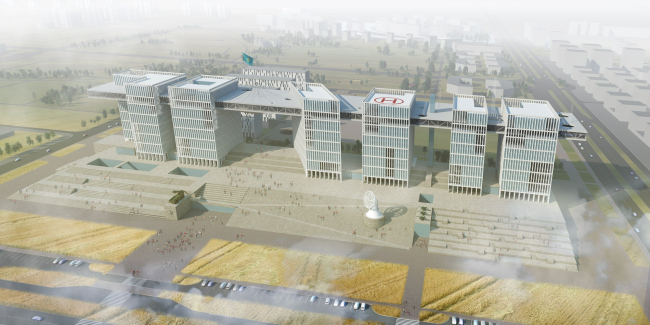
Multifunctional complex of the Defense Ministry of Kazakhstan Republic © “Studio 44”
The solution implying a fractured multipart composition was also suggested by the immediate architectural context: directly behind the future ministry, there is a residential area, and the town of "EXPO-2017", located across from it, is indeed a "town" where the expo pavilions form a highly developed grid of blocks and streets. Forming the housing front of the Orynbor Street, the elongated building of the defense ministry works both as a wall that protects the residential area from the noisy thoroughfare, and an imposing vis-a-vis of the international expo complex. This wall, however, is not completely blind - it consists of six separately standing towers that are united by two horizontal elements: the massive stylobate that elevates the volumes above the street, and a "slab" floor that spreads 51 meters above the ground.
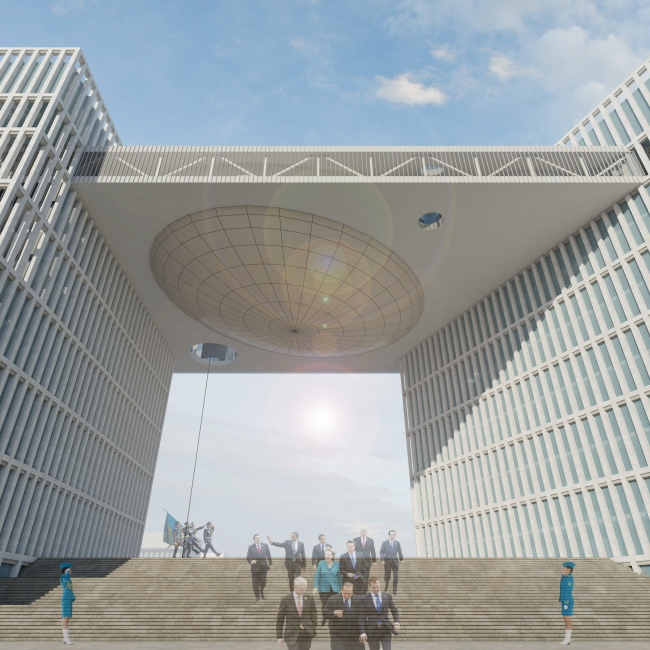
Multifunctional complex of the Defense Ministry of Kazakhstan Republic © “Studio 44”
The vertical volumes are used to house the departments (which are precisely six in number), while the horizontal "slabs" house the public functions. Thus, the stylobate includes parking stalls, a sport and a medical center, and a billet. Here one will also find the checkpoints and the complex's basic staff-only entrances.
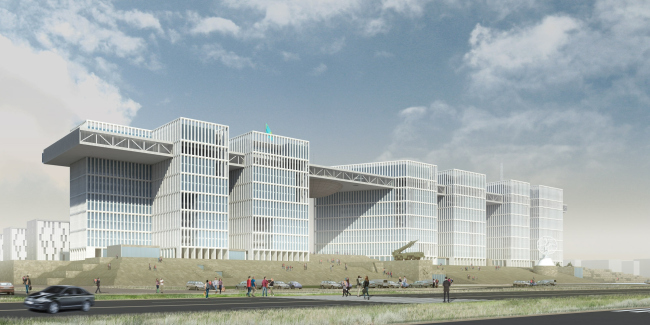
Multifunctional complex of the Defense Ministry of Kazakhstan Republic © “Studio 44”
The two-level roof of the stylobate deserves a special mention. The first level is located on the mark of 9 meters and is treated as the open public space at the foot of the towers, which is connected to the street and the ceremonial area before the entrance with a system of stairs and ramps. Important is the fact that the visitor and the employee flows are separated as early on as on this area: the employees enter the building at the ground level through two checkpoints, while the visitors have to get up to the first level of the podium and through one of the guest lobbies. And on the second level of the stylobate (+15 meters), the military ceremonial grounds are located: ones for the dress parades, making the colors, and so on - this place is accessible by the open-air staircase and from the second floors of the towers.
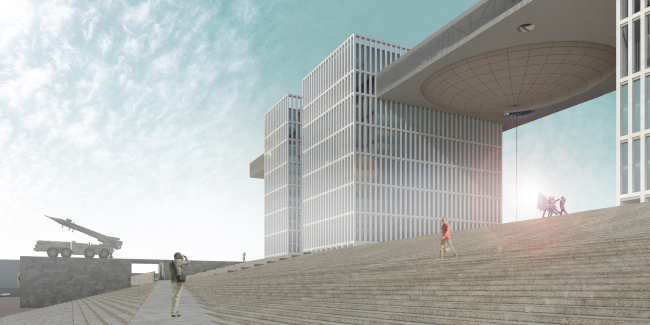
Multifunctional complex of the Defense Ministry of Kazakhstan Republic © “Studio 44”
This network of public territories, including the entrance area, the staircases, and the two levels of the stylobate, will be decorated, according to the architects' plan, with exhibits of the Military Glory Museum - objects of military hardware, thematic bas-reliefs, sculptures, etc. According to the architects' idea, this will give extra meaning to the territories of the building, turning the very approaching to it into an interesting guided tour and visually demonstrating the main activity of the agency that resides here.
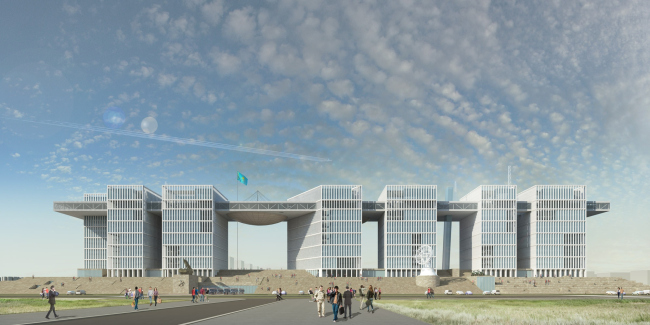
Multifunctional complex of the Defense Ministry of Kazakhstan Republic © “Studio 44”
In the upper horizontal slab, the authors of the project grouped the functions that are necessary for all of the departments. The restaurant, the bar, and the cafeteria for the staff, as well as the banquet hall are arranged in such a way as to provide the best views of the new center of the city, the numerous halls, lobbies, foyers, and meeting rooms alternating with open-air terraces. It is also here, on the twelfth floor, that one will find the ceremonial rooms for receiving official delegations and the officers' club (the "cup" of the main auditorium "grew into" the intermediate floor, forming, above the main staircase of the complex, an imposing semi-dome), as well as the Museum of Military Glory, access to which will also be provided from the roof of the stylobate with the help of a dedicated elevator group.
What is important is the fact that this slab, but one floor tall, looks like a thin plate against the background of the entire complex. Besides, it does not cover the towers from the top but gets pierced by them, thus giving to the entire composition not only grace but some certain dramatic look. This solution, by the way, made it possible to free the roofs of the towers for the tasks far more serious than serving the public functions: this is the place of the helicopter landing and the various communication antennae.
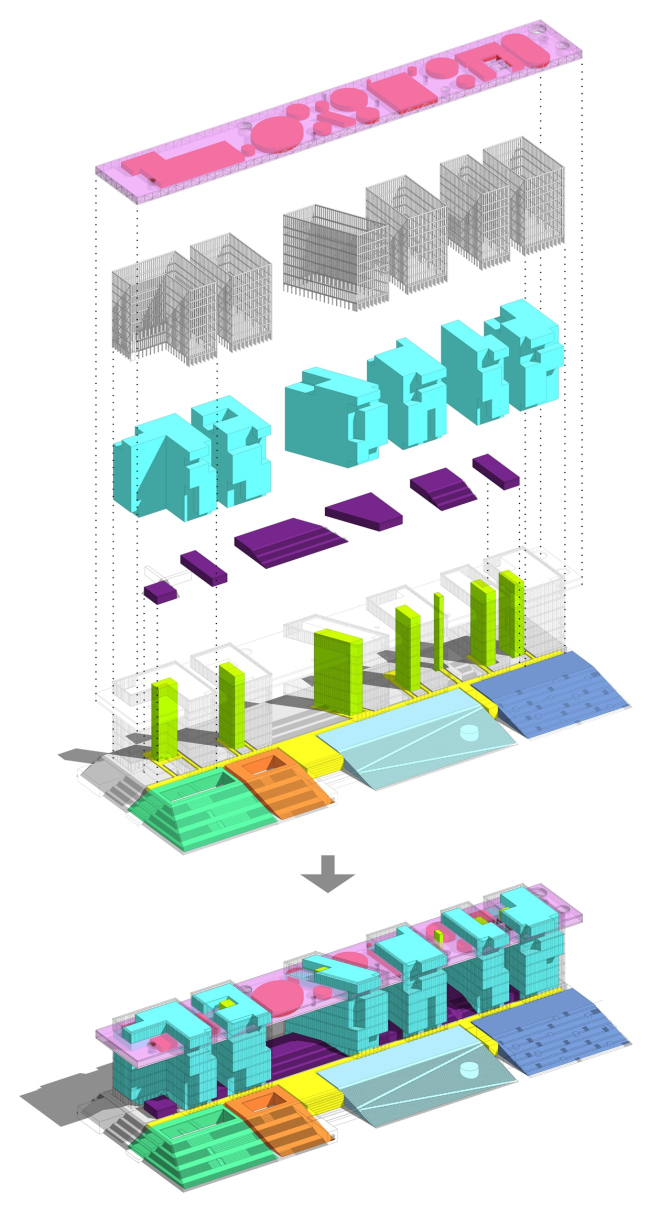
Multifunctional complex of the Defense Ministry of Kazakhstan Republic © “Studio 44”
As for the towers, they have extremely laconic facades whose thin grilles give the buildings an unambiguously "administrative" nature. And still, these volumes do not look QUITE like soldiers standing at attention: the architects deliberately give them different plan shapes: sometimes they are rectangles, sometimes squares, and sometimes their plans are even of a diamond shape. The authors also refrained from placing the main staircase exactly in the middle between the towers. On the contrary, within the framework of the general “system”, they form obvious pairs, while two apertures between “couples” are increased. Specifically, into one of such apertures the architects inscribe the march-past of the stairs, and the second one houses the "trunk" of the passenger elevator that connects the stylobate to the museum.
The monumental composition proposed by "Studio 44" can be treated as an ensemble of several giant triumphal arches and portals: emphatically modern in its proportions and geometry, they not only form an image of a public institution of paramount importance, but also make the new building of the Ministry of Defense of Kazakhstan Astana proportionate to the city's new housing.
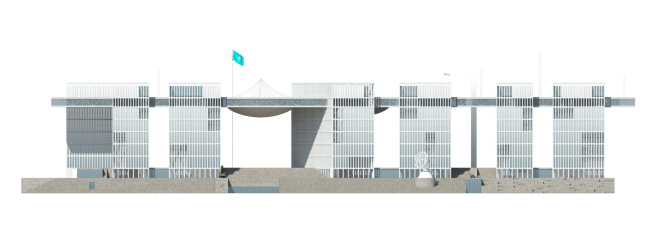
Multifunctional complex of the Defense Ministry of Kazakhstan Republic © “Studio 44”

Multifunctional complex of the Defense Ministry of Kazakhstan Republic © “Studio 44”

Multifunctional complex of the Defense Ministry of Kazakhstan Republic © “Studio 44”

Multifunctional complex of the Defense Ministry of Kazakhstan Republic © “Studio 44”
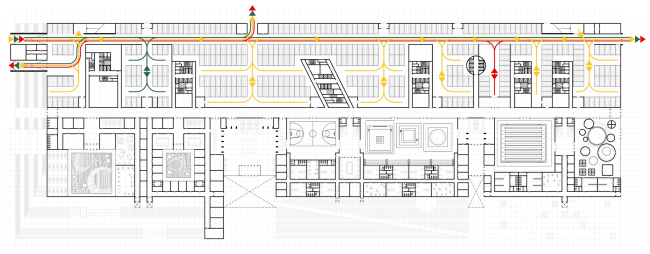
Multifunctional complex of the Defense Ministry of Kazakhstan Republic © “Studio 44”
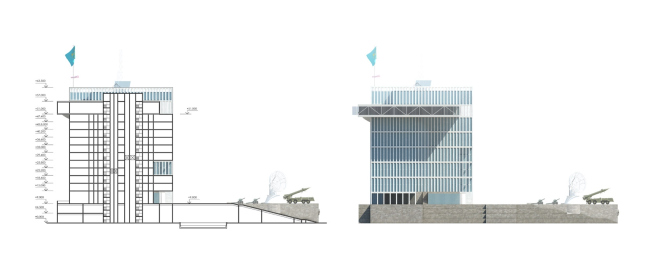
Multifunctional complex of the Defense Ministry of Kazakhstan Republic © “Studio 44”
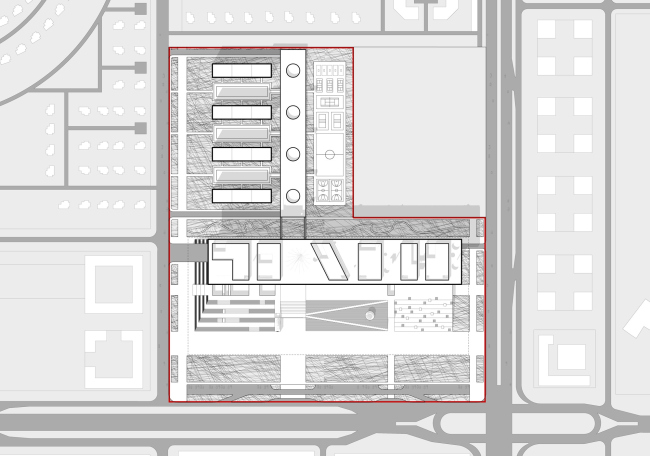
Multifunctional complex of the Defense Ministry of Kazakhstan Republic © “Studio 44”
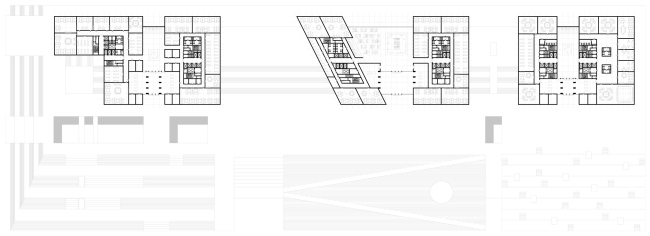
Multifunctional complex of the Defense Ministry of Kazakhstan Republic © “Studio 44”












